How to Back Up Mac with 2 Easy Methods?
- Dec 25, 2020
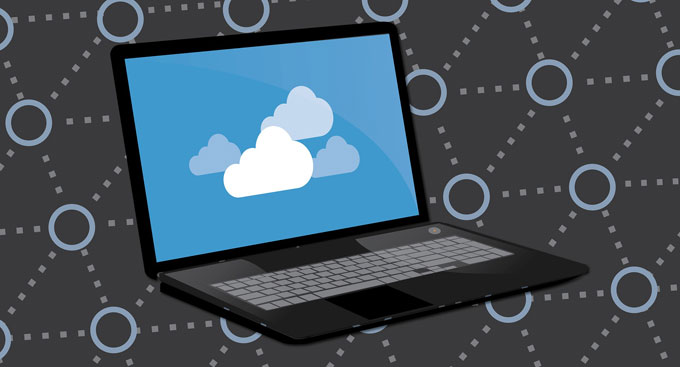
Before reinstalling macOS or upgrading to the newest compatible macOS, there is one thing that you have to consider is to back up your current macOs and all your personal files. This is a safe, easy, and fast way to get your macOS come back after updating to the latest one. In addition to that point, backup Mac also is an efficient method to troubleshoot the issues when your Mac can’t boot up or keeps crashing.
Methods to Back Up Your Mac
There are two methods you can use to back up your macOS: Back up with Time Machine and store files in iCloud and iCloud Drive. Follow the step-by-step guide as follows.
Back up your Mac with Time Machine
Time Machine is a built-in function for backing up your Mac automatically. This way is very easy to follow and all your personal files can be stored in your storage device. Before backing up your macOS, you’d better get an external storage device with enough space ready for using. Next, refer to the steps on how to create a time machine backup.
Step 1: Plugin an external drive on your Mac. Click Apple menu > click System Preferences > click Time Machine.
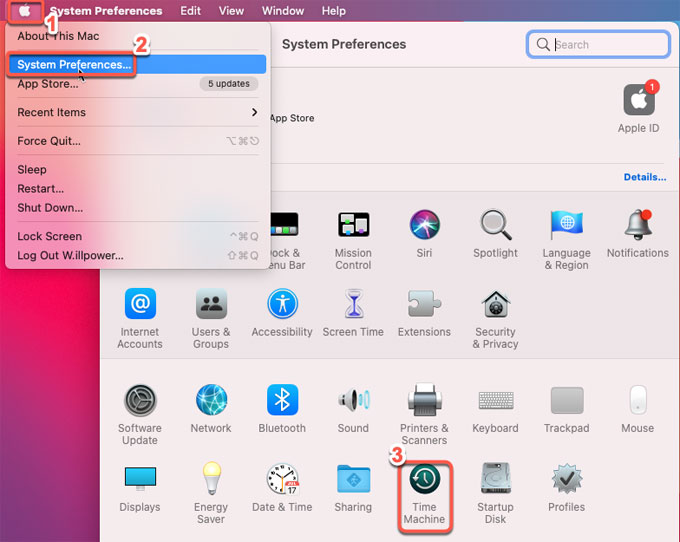
Step 2: Click Select Backup Disk. If need, you should click the lock icon to unlock the Time Machine preferences. Enter your password to allow this.
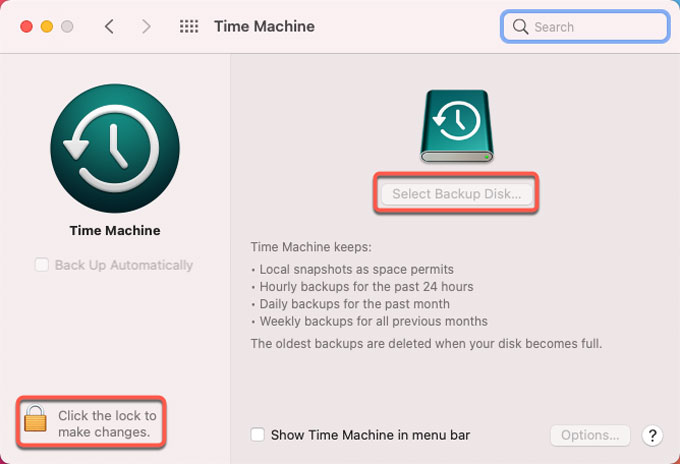

Step 3: The pop-up window lists all available disks of your Mac. Select your target backup disk from the list. If you want to secure your backups and won’t let other users access, check the option of Encrypt backups. Then click Use Disk.
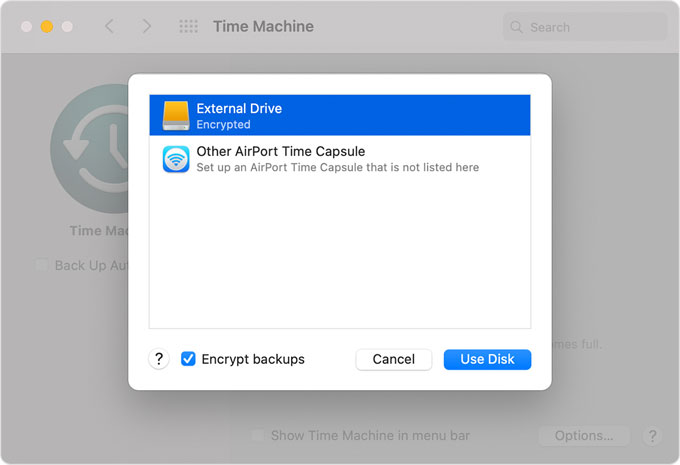
Please note: If you are prompted that the selected backup disk has been not formatted, click Erase to continue the process. This step will erase all things on your backup disk, make sure they are useless or backed up.
Step 4: Next, Time Machine will start a periodic backups—the work is underway and you don’t need to do anything during the whole workflow. Meanwhile, you can still use your Mac as usual. Or you can open Time Machine > click Back Up Now button to backup manually.
Store your files in iCloud and iCloud Drive
Backing up files in iCloud and iCloud Drive is a time-saving method to store all your personal files including photos, apps, emails, documents and more in real time. You can get those file no matter when you want to access or edit. Refer to steps below.
Step 1: Click Apple menu > click System Preferences > click Apple ID. You won’t need to click the Apple ID option if you’re running on macOS Mojave or earlier.
Step 2: Click iCloud > sign in Apple ID if need.
Step 3: Click iCloud Drive. If your iCloud storage is enough, you can store all your personal files there. And in this way, you can sync all your files between different Macs, iPhones and iPad.
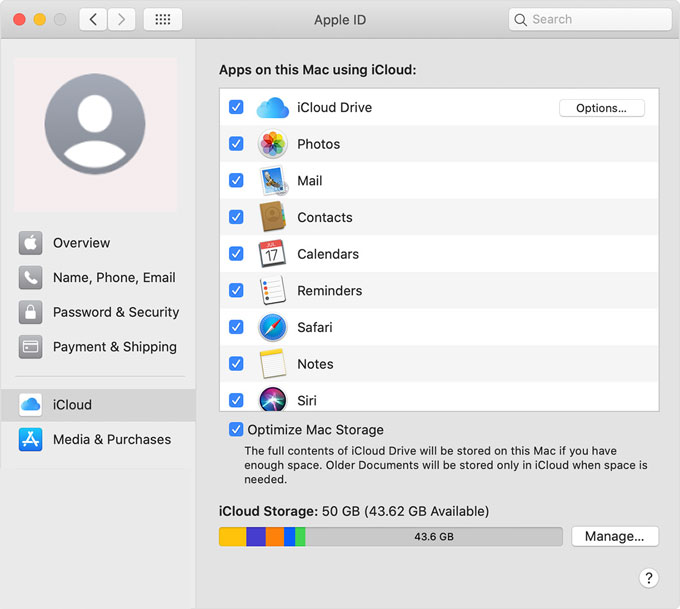
Please Note: You should make sure your iCloud on your Mac is enable. If it isn’t, you just need to tick it. If you haven’t use iCloud so far, click Start Using iCloud. And you can click Options button to add Desktop, Documents folders or any apps that you would like to store in iCloud drive. And you also can choose to uncheck Optimise Mac Storage to only store files you need on your Mac, otherwise the space will be run out.
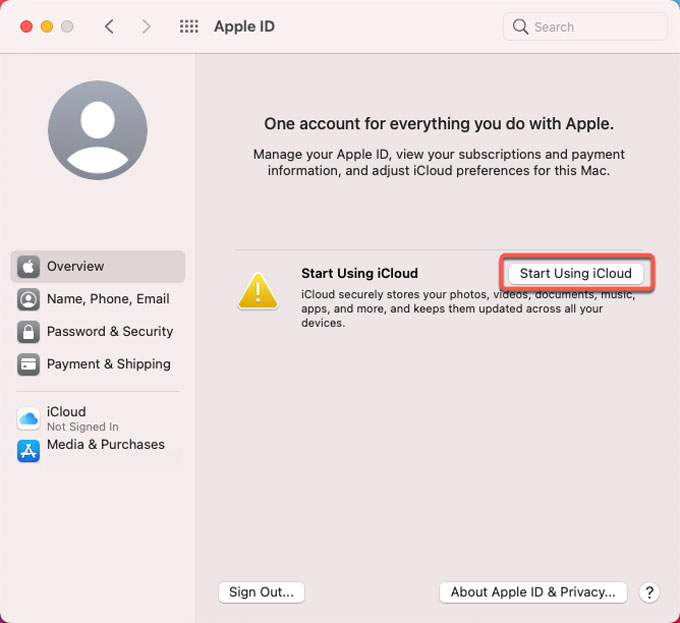
Discover more how to guide here:
- How to Reinstall macOS on Apple M1 Macs?
- How to Downgrade Your Mac from macOS Big Sur Back to Catalina?
- How to Start up Your Apple Silicon M1 Mac into Safe Mode?
Popular Posts
- What Kind of Programs do You Think are Necessary in Windows 10?
- What’s SpyHunter and How to Fix the File Being Quarantined
- How to Forcibly Remove a Program That Won’t Uninstall in Windows
- 3 Tips to Remove a Program that Won’t Uninstall
- How To Uninstall Applications On Windows 10 – Program Removal Guides
- Tutorial: How to Remove & Uninstall Programs / Applications on Windows 7